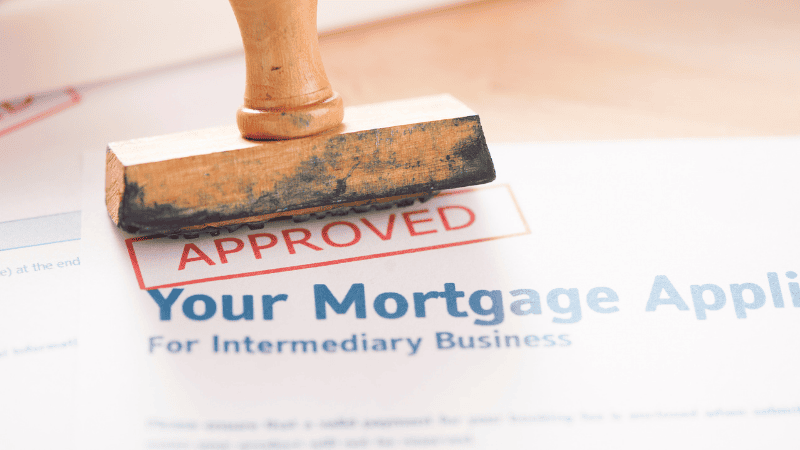U.S. Mortgage Rates Today July 18th 2025: Most Rates Hold Firm
Daily U.S. Mortgage Rate Update: July 18, 2025
Happy Friday, everyone! It’s July 18th, and we’re wrapping up the week with another look at the U.S. mortgage market. Today, the 30-year fixed rate is holding pretty steady, which is a welcome sign of consistency. Whether you’re actively searching for a new home, thinking about refinancing, or you’re a real estate investor keeping a close watch, these daily movements are super important for navigating your financial path.
My goal, as always, is to give you a clear, concise, and personal rundown of what’s happening with U.S. mortgage rates across different loan types, so you have the best info to make smart decisions.
Key Takeaways
- 30-year fixed rates show continued stability today.
- 15-year fixed rates are also holding firm, offering predictability.
- ARM rates saw minor, mixed adjustments.
- The Federal Reserve’s cautious stance on inflation remains a key influence.
- Housing inventory is gradually expanding, providing more choices for buyers.
- Certain housing markets are uniquely positioned for a boost with future rate moderation.
- Foreign investment in U.S. real estate is seeing a notable surge.
Investment Properties: Browse Turnkey Rental Properties For Sale in Our Online Portal
Current Mortgage Rates for Purchase Loans
Here are the average mortgage rates for various purchase loan types as of July 18, 2025:
| Tipo de préstamo | Tipo de interés | APR |
|---|---|---|
| Fijo a 30 años | 6.77% | 6.83% |
| 20-Year Fixed | 6.54% | 6.63% |
| Fijo a 15 años | 5.95% | 6.05% |
| 10-Year Fixed | 5.91% | 6.00% |
| VA Mortgage (30-Year Fixed) | 6.47% | 6.51% |
| FHA Mortgage (30-Year Fixed) | 6.44% | 6.50% |
| Jumbo Mortgage (30-Year Fixed) | 6.78% | 6.84% |
| 7-Year ARM | 6.23% | 6.48% |
| 5-Year ARM | 6.04% | 6.40% |
| 3-Year ARM | 5.78% | 6.57% |
Rates are subject to change and are averages based on data from various sources as of July 18, 2025. Sources: Bankrate, CNET, Freddie Mac.
Current Mortgage Rates for Refinance Loans
For homeowners considering refinancing, here are today’s average rates:
| Tipo de préstamo | Tipo de interés | APR |
|---|---|---|
| 30-Year Fixed Refinance | 6.77% | 6.84% |
| 20-Year Fixed Refinance | 6.54% | 6.63% |
| 15-Year Fixed Refinance | 6.11% | 6.20% |
| 10-Year Fixed Refinance | 6.11% | 6.21% |
| VA Mortgage Refinance (30-Year Fixed) | 6.54% | 6.58% |
| FHA Mortgage Refinance (30-Year Fixed) | 6.80% | 6.88% |
| Jumbo Mortgage Refinance (30-Year Fixed) | 6.65% | 6.70% |
| 7-Year ARM Refinance | 6.33% | 6.59% |
| 5-Year ARM Refinance | 6.01% | 6.53% |
| 3-Year ARM Refinance | 6.02% | 6.55% |
Rates are subject to change and are averages based on data from various sources as of July 18, 2025. Sources: Bankrate, Investopedia.
Commentary and Analysis
Let’s dive into what’s shaping the U.S. mortgage market this Friday, July 18, 2025. The overall theme continues to be the Federal Reserve’s careful balancing act with inflation. Recent economic data, particularly on consumer prices, means the Fed is likely to stick with its “wait-and-see” approach for a bit longer when it comes to cutting interest rates. While many are hoping for rate reductions later this year, perhaps by September, the Fed’s top priority is ensuring inflation is truly under control. This means we’ll probably see rates remain in their current range in the short term as policymakers meticulously analyze incoming economic reports.
In the housing market, it feels like we’re settling into a more normalized rhythm. We’re seeing a gradual, but steady, increase in available homes, which is a breath of fresh air for buyers who’ve been facing limited choices. This growing inventory, combined with mortgage rates that are still a bit higher than the pandemic lows, is leading to a more moderate pace of home price appreciation.
In some regional and local markets, we’re even observing slight price adjustments. This suggests the market is becoming more balanced, moving away from the intense bidding wars of recent years. Buyers might find a bit more leverage for negotiation, and sellers need to be strategic and realistic with their pricing. It’s a different landscape, and understanding the nuances of your specific local market is more critical than ever.
Related: U.S. Mortgage Rate Forecast and Expert Predictions 2025, 2026, 2027, 2028, 2029
Quotes from Leading Industry Players
Sam Khater, Freddie Mac’s chief economist, recently noted that “The 30-year fixed-rate mortgage inched up this week and continues to stay within a narrow range under 7%. While overall affordability headwinds persist, rate stability coupled with moderately rising inventory may sway prospective buyers to act.” This perfectly captures the current delicate balance in the market.
Kara Ng, senior economist at Zillow Home Loans, highlighted the opposing forces at play: “Signs of a gradually cooling economy argue for lower rates, while persistent inflation supports upward pressure.” This explains why rates aren’t seeing dramatic swings in either direction.
Jeffrey Roach, Chief Economist for LPL Financial, commented on the Fed’s approach: “The FOMC is comfortable remaining in wait-and-see mode. Despite headwinds, the economy continues to trudge along, giving policymakers time to assess the projected impact from tariffs.” This reinforces the Fed’s data-dependent strategy.
Related: Mid Year Rental Market Report From Rentometer: My Analysis
What This Means for You
For Homebuyers:
Even though rates aren’t at those record lows we saw during the pandemic, they’re still within a manageable range for many. Being prepared and informed is your superpower in today’s market.
- Get Pre-Approved: This isn’t just a formality; it’s a powerful statement to sellers and helps you lock in a rate, giving you peace of mind against sudden increases.
- Shop Around: Seriously, don’t just go with the first lender you talk to! Rates and terms can vary significantly, so compare multiple offers to ensure you’re getting the best deal possible.
- Consider Different Loan Types: While fixed-rate mortgages offer predictable payments, if you anticipate moving or refinancing within a few years, an Adjustable-Rate Mortgage (ARM) might offer a lower initial rate.
- Explore First-Time Buyer Programs: If you’re new to homeownership, definitely look into FHA, VA, and USDA loans. They often come with lower down payments and more flexible qualification criteria, making homeownership more accessible.
For Homeowners Looking to Refinance:
If you’re one of the lucky ones who locked in a super low rate from the pandemic era, refinancing might not offer massive interest rate savings right now. But there are still compelling reasons to consider it beyond just the rate!
- Calculate Your Break-Even Point: Figure out how long it will take for any monthly savings from a new, potentially lower rate to offset the closing costs of the refinance.
- Align with Your Goals: Are you looking to lower your monthly payment, shorten your loan term, or perhaps tap into your home equity for a major renovation or to consolidate high-interest debt? Your specific financial goals will guide you to the best refinance option.
- Cash-Out Refinance: If you’ve built up significant equity in your home, a cash-out refinance can provide funds for big projects or debt consolidation. Just be mindful of the new interest rate on the entire loan amount.
For Real Estate Investors:
The current mortgage rate environment presents both challenges and exciting opportunities for property investors. While higher rates mean increased financing costs, there are definitely opportunities too. Dr. Lawrence Yun, the Chief Economist for the National Association of Realtors (NAR) – speaking recently at their Midyear Real Estate Summit – highlighted that cities like Cleveland and Kansas City are uniquely positioned to respond faster to lower U.S. interest rates. He noted that homeowners in Kansas City have built up significant equity, which can fuel market mobility, and Cleveland has a large population of renters in their 30s who are eager to become homeowners once rates become more favourable.
This is a huge signal! It means that investors who leverage today’s market conditions to buy rental properties at a good price in these markets will do very well over the next few years as rates ease (as expected) and demand picks up.
- Focus on Cash Flow: With rates where they are, it’s more crucial than ever to meticulously analyze potential rental income versus expenses to ensure robust cash flow and attractive returns.
- Leverage Local Market Knowledge: Beyond national trends, understanding specific local market conditions, especially in areas highlighted for growth, can help you uncover potentially undervalued properties or motivated sellers.
- Explore Non-QM Loans: If traditional lending doesn’t quite fit your investment model, Non-Qualified Mortgage (Non-QM) loans can offer more flexibility, though they typically come with higher interest rates.
- Long-Term Strategy: Don’t let short-term rate fluctuations deter you. A long-term investment horizon allows you to ride out market shifts and still benefit from long-term appreciation.
Related: The Best U.S. Real Estate Markets for Foreigners Seeking Cashflow and Equity Growth in 2025
U.S. Mortgages for Foreigners and Non-Residents
For my international investors and non-residents looking to buy property in the U.S., there are specialized mortgage programs designed to fit your unique circumstances. These loans cater to individuals who might not have a traditional U.S. credit history or permanent residency.
It’s a growing area, too! In fact, new data reveals that global buyers poured $56 billion into the U.S. real estate market between April 2024 and March 2025, marking a significant 33.2% increase in investment. The number of homes purchased by foreign buyers also jumped 44% to 78,100 during that period. Interestingly, China has re-emerged as the top country of origin, with investors spending $13.7 billion, and Florida continues to be the most popular destination, attracting 21% of all foreign buyers.
What’s even more impressive is that nearly half (47%) of these foreign buyers paid all-cash, showcasing strong purchasing power, especially amid today’s higher interest rates. This really highlights the robust and increasing appetite from international investors for U.S. properties, demonstrating confidence in the market regardless of current rate fluctuations.
| Tipo de préstamo | Rate Range (Approx.) | LTV Range | Ideal Use Case |
|---|---|---|---|
| Foreign National Loan | 8.00% – 9.00% | Hasta 80% | Foreign nationals with provable foreign income and good foreign credit. |
| ITIN Loan | 7.50% – 8.50% | Hasta 80% | Non-Residents with an ITIN, U.S. income, and U.S. Credit. |
| Préstamo DSCR | 6.75% – 7.75% | Up to 70% | Foreign Nationals and Non-Resident buying rental properties. No U.S. credit or income required. |
Rates and LTVs for foreign national loans can vary significantly based on lender, borrower profile, and property type. It is crucial to consult with specialized lenders.
These specialized loan programs offer clear pathways for international investors and non-residents to access the U.S. real estate market, often with distinct requirements compared to conventional mortgages. It’s always important to work with lenders and/or brokers experienced in working with international clients to fully understand all terms and conditions.
Foreign National Lenders: A Complete List of U.S. Mortgage Lenders With Foreign National, ITIN, and DSCR Loan Programs for Non-Residents
GET PRE-APPROVED TODAY!
Comience hoy mismo su viaje de inversión inmobiliaria en Estados Unidos y desbloquee oportunidades de financiación exclusivas. Book a llamada estratégica gratuita 1:1 con un miembro de nuestro equipo directivo para discutir su estrategia personalizada.
“Having personally invested in over 120 US rental properties from overseas, I know the true value of getting the right advice and support.
David Garner - Cashflow Rentals
GROW YOUR WEALTH WITH U.S. REAL ESTATE
Start your US real estate investment journey today, and book a llamada estratégica gratuita 1:1 with a member of our senior management team.
“Having personally invested in over 120 US rental properties from overseas, I know the true value of getting the right advice and support.
David Garner - Cashflow Rentals

Preguntas frecuentes
What factors influence U.S. mortgage rates?
U.S. mortgage rates are influenced by a variety of factors, including the overall health of the U.S. economy, inflation, actions by the Federal Reserve (especially its benchmark interest rate decisions), bond market investor sentiment (particularly the 10-year Treasury yield), and the supply and demand dynamics within the housing market. Global economic events can also play a role.
Should I lock my mortgage rate today?
Deciding when to lock your mortgage rate depends on your personal financial situation and your outlook on future rate movements. If you’re comfortable with the current rates and want to avoid potential increases, locking your rate provides certainty. If you believe rates will fall further, you might consider floating your rate, but this carries the risk of rates rising instead. Many lenders offer “float down” options, which allow you to lock in a rate but also take advantage of a lower rate if it becomes available before closing.
What is the difference between interest rate and APR?
The interest rate is the percentage you pay on the principal loan amount. The Annual Percentage Rate (APR) is a broader measure of the cost of borrowing money. It includes the interest rate plus other costs like origination fees, discount points, and mortgage insurance, spread out over the loan term. APR provides a more complete picture of the total cost of the loan.
How often do mortgage rates change?
Mortgage rates can change daily, and sometimes even multiple times within a single day. They are highly responsive to economic data releases, news, and market sentiment. While the general trend might remain stable for weeks, minor fluctuations are common on a day-to-day basis.
Is it a good time to buy a home with current mortgage rates?
Whether it’s a good time to buy depends on your individual circumstances. While rates are higher than the pandemic lows, they are still below the long-term historical average. If you are financially stable, have a down payment, and have found a home that meets your needs, buying can still be a good decision, especially if you plan to stay in the home long-term. Remember, you can always refinance in the future if rates drop significantly.







![USA Property Investment for Foreign Buyers [2025 Guide]](https://cashflowrentals.net/wp-content/uploads/2025/07/USA-Property-Investment-for-Foreigners-Expert-2025-Guide-500x383.png)



